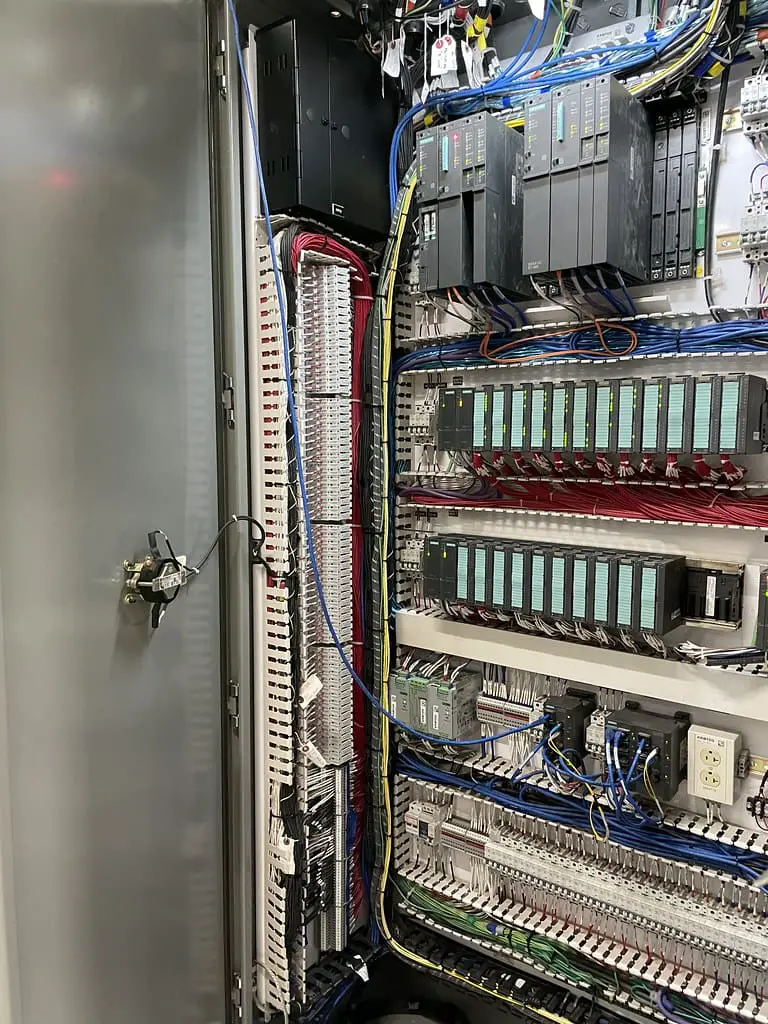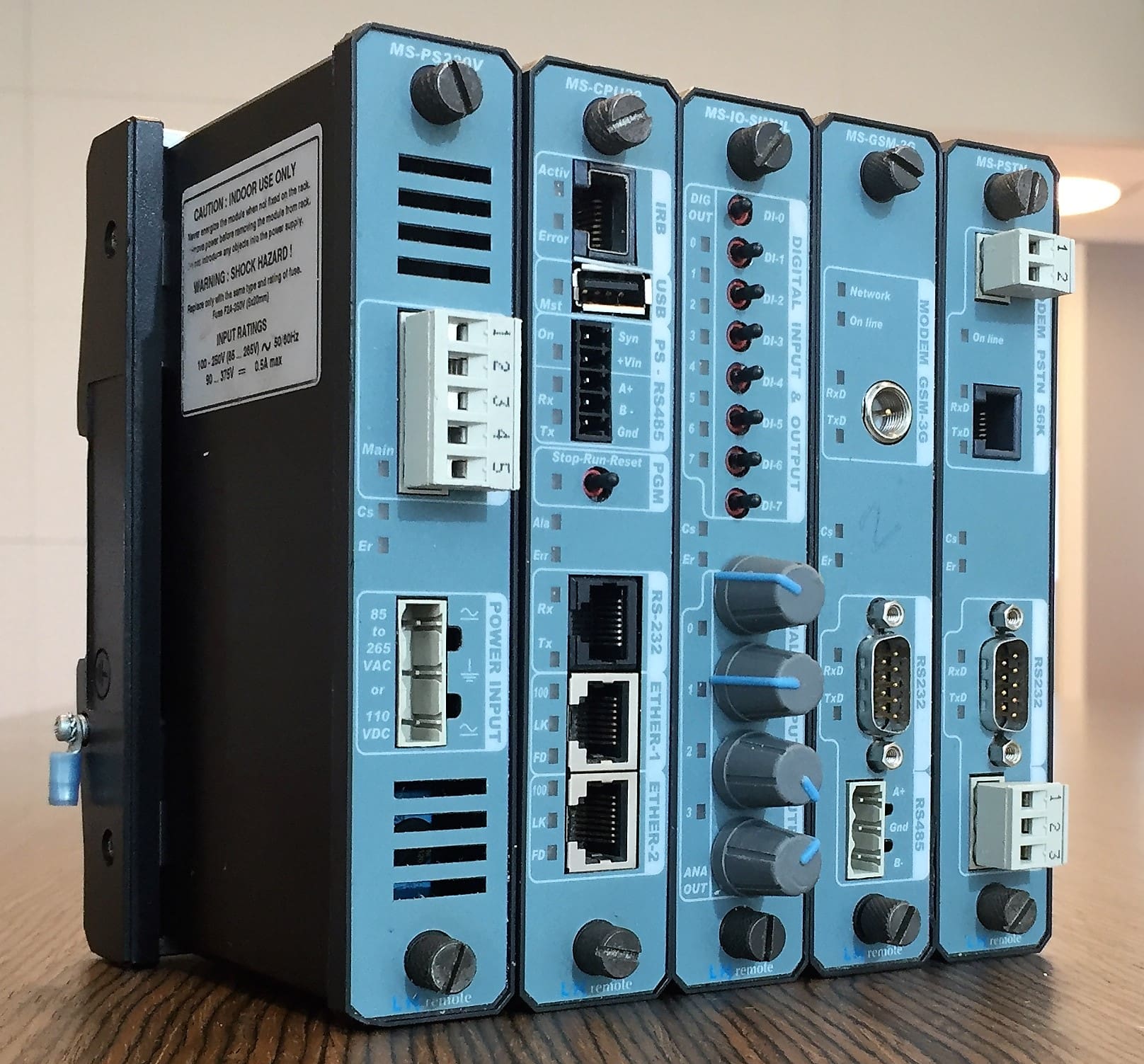PLCs and RTUs are both electrical devices with functionality that overlap. RTCs can be purchased with PLC-like characteristics, and PLCs can be purchased with RTC-like features.
Since the industry made the functional language operating RTUs and PLCs mainstream, many companies market proprietary replacements and other related environments to execute these programs.
Despite the fact that programmable logic controllers (PLCs) have become the industry standard, remote terminal devices are nevertheless used in a variety of applications (RTUs). Choosing which is best for your needs is a debate that is still ongoing.
Key Takeaways
- Programmable Logic Controllers (PLCs) are industrial computers used for automation, while Remote Terminal Units (RTUs) are devices that collect and transmit data in remote monitoring systems.
- PLCs are better suited for complex control tasks with fast response times, while RTUs are ideal for long-distance data transmission and monitoring in harsh environments.
- PLCs have a wider range of programming capabilities, while RTUs have a more limited set of predefined functions but can operate on lower power.
PLC vs RTU
PLCs (Programmable Logic Controller) are designed to control processes using digital and analog inputs and outputs. RTUs (Remote Terminal Units) use communication protocols to monitor and control processes and equipment in a distributed control system (DCS).

The term “PLC” stands for “programmable logic controller.” They are utilized to automate electromechanical processes such as factory assembly lines, light fixtures, amusement rides, and so on.
They are designed specifically for output configurations with a large number of inputs. They can work at a variety of temperatures and are resistant to electrical noise, vibration, and impact.
RTU is a microprocessor-based device. It is primarily used to monitor and control field devices prior to connecting to plant control or SCADA. It can also be used to transform protocols.
RTUs must always be in contact with SCADA at the base station. The RTU provides a quick and adaptable answer to most control requirements.
Comparison Table
| Parameters of Comparison | PLC | RTU |
|---|---|---|
| Full-Form | Programmable Logic Controller | Remote Terminal Units |
| Suitable For | Local control | Wider geographical telemetry |
| Cost | Cheaper | More expensive |
| Tools Used | IEC 61131-3 | Alternate proprietary tools |
| Processing | Local processing | Little to no processing |
What is PLC?
PLCs (programmable logic controllers) are electrical devices that control a process. The CPU, input, and output devices, power supply, connectivity, and redundancy components comprise it.
PLCs are preprogrammed and deployed based on their application.
A PLC accepts field input, processes it according to programming, and then transmits commands to field equipment. It can also accept commands from plant operators and send them to field equipment via SCADA.
The features of PLCs vary from manufacturer to manufacturer, but the underlying design remains the same.
PLCs can function as stand-alone devices but are difficult to set up. They are unsuitable for use as a master controller in a control system.
A PLC is not ideal if your system requires a large number of I/Os to be monitored or controlled. They should not be used as protocol converters or to control other Intelligent Electronic Devices (IEDs).
PLCs provide a variety of functions, such as process control, relay control, motion control, networking, and so on. They have begun to match desktop computers in terms of data storage, processing, communication, and handling.
PLCs are available in a variety of sizes, each with its own set of I/O and program capabilities. Their abilities differ widely, making broad generalizations problematic.
The PLC comes with its own native interface cards for the PLC manufacturer’s native protocol, but it relies on third-party interface cards for other Fieldbus protocols.
As a result, the engineering software configures the communication interface card for the native protocol automatically.
However, for other Fieldbus protocols, the interface card must be configured separately in order to map the variables before they can be utilized in the control strategy, graphics, and so on.

What is RTU?
RTU is an abbreviation for remote terminal units. It’s used to link field equipment to SCADA.
RTUs are used at distant stations to control equipment that is located a great distance away from the control station (for example, the opening and closing of motorized valves in oil pipelines).
RTUs can be programmed in the same way that PLCs can. RTUs can support multiple communication protocols at the same time.
It accepts just a restricted number of input and output devices. The primary role of RTUs is to collect telemetry data and control objects/equipment located in remote places.
RTUs (Remote Terminal Units) are intelligent enough to control a process or many processes without the intervention of a more intelligent controller or master.
It can function as both a slave and a master in a vertically deployed control system. It can also be used as a protocol or to control IEDs.
The term RTU is an abbreviation for “Remote Terminal Units.” They are also referred to as “Remote Telemetry Units.” An RTU’s principal duty is to connect the SCADA to the physical objects present.
The RTU does not support control loops or control algorithms.
Because of cheaper technology, the functionality of RTUs and PLCs began to converge, and the industry standardized the language for RTU-run programs. IEC 61131-3 has now become a standard.

Main Differences Between PLC and RTU
- PLC is short for programmable logic controllers, and RTU is short for remote terminal units.
- PLCs are suitable for local control like amusement rides, assembly lines, etc., whereas RTUs are suitable for wider geographical telemetry since they use wireless communication.
- PLC is cheaper in comparison to RTUs.
- PLC used IEC 61131-3, whereas RTU uses other alternative proprietary tools.
- PLC requires local processing. On the other hand, RTUs require little to no processing.


